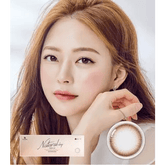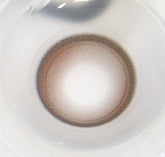以下常見問題是我們的客戶在購買主題之前的一些常見問題。
如果您還有其他問題,請寄至cs@kpop2.com 。
- 全部
- 售前問題
- 技術+主題問題
- III. Lens Care & Makeup
- IV. Troubleshooting
需要幫忙?
Can’t find the answer you’re looking for? Send us a message via our contact form and we’ll assist you as quickly as possible. For order inquiries, please include your order number; for delivery issues, add brief details and photos of the parcel/label/items to speed things up.
售前問題
是的,將會如此
請確保您遵循以下步驟:
1/ 從 themeforest.net 下載套件(檔案為 zip 格式)
2/ 提取剛剛下載的檔案(不要忘記這一步)。
3/ 在資料夾 Ella Sections Ready xxx 中找到此檔案:ella-xxx-sections-ready.zip,然後您只需將 ella-xxx-sections-ready.zip 檔案上傳到您的 Shopify 商店。
- 如果您想使用 Ella RTL 版本,請在 Ella Sections Ready xxx RTL 資料夾中找到此檔案:ella-xxx-sections-ready-rtl.zip,然後只需將 ella-xxx-sections-ready-rtl.zip 檔案上傳到您的 Shopify 商店即可。
- 如需安裝子主題,請前往對應的主題資料夾
為了節省您的時間並快速獲得我們的支持,請按照以下步驟操作:
-
為我們建立一個員工帳戶(具有主題權限和設定權限) http://docs.shopify.com/manual/settings/account/staff-members
-
捕捉您遇到的問題的螢幕截圖或影片。
-
指定您正在使用的範本和版本。
-
清楚描述如何重現問題。
-
將所有資訊(員工帳戶、螢幕截圖、影片、範本名稱和版本、問題描述、連結)發送至 email@domain.com
是的,如果需要,我們將協助您安裝模板
是的,我們提供。請將您的客製化請求發送至 email@domain.com,我們將提供報價。謝謝。
通常情況下,週末我們不提供支持,緊急情況除外。在這種情況下,您只需在郵件中標註“緊急”,我們會盡快回覆您。
1/ 為我們建立一個員工帳戶(具有主題權限和設定權限) http://docs.shopify.com/manual/settings/account/staff-members
2/ 捕捉您遇到的問題的螢幕截圖或影片。
3/ 指定您正在使用的範本和版本。
4/ 清楚描述如何重現問題。
5/ 請在此提交支援工單: https://halosoft.ticksy.com/ 。我們的支援團隊將盡快回覆您,請耐心等待。
技術+主題問題
使用疊加文字,讓客戶深入了解您的品牌。選擇與您的風格和品牌故事相關的圖片和文字。
使用疊加文字,讓客戶深入了解您的品牌。選擇與您的風格和品牌故事相關的圖片和文字。
使用疊加文字,讓客戶深入了解您的品牌。選擇與您的風格和品牌故事相關的圖片和文字。
使用疊加文字,讓客戶深入了解您的品牌。選擇與您的風格和品牌故事相關的圖片和文字。
使用疊加文字,讓客戶深入了解您的品牌。選擇與您的風格和品牌故事相關的圖片和文字。
使用疊加文字,讓客戶深入了解您的品牌。選擇與您的風格和品牌故事相關的圖片和文字。
使用疊加文字,讓客戶深入了解您的品牌。選擇與您的風格和品牌故事相關的圖片和文字。
使用疊加文字,讓客戶深入了解您的品牌。選擇與您的風格和品牌故事相關的圖片和文字。
使用疊加文字,讓客戶深入了解您的品牌。選擇與您的風格和品牌故事相關的圖片和文字。

















